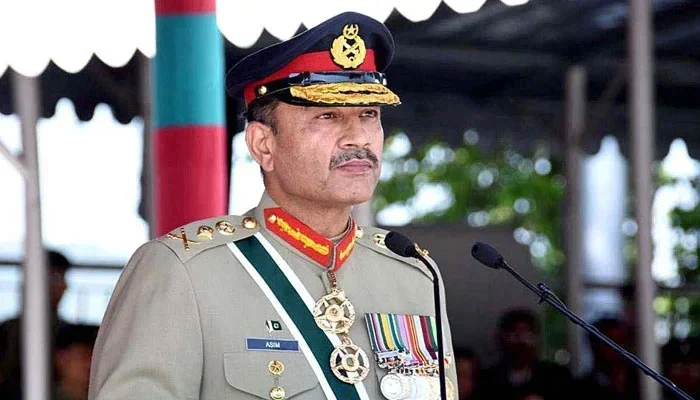Chief of Army Staff General Syed Asim Munir has been elevated to the esteemed rank of Field Marshal, in recognition of his distinguished service and commendable leadership during the recent short but significant conflict with India.
Historical records reveal that approximately 66 years ago, in 1959, the then-Army Chief, Ayub Khan, was granted the rank of Field Marshal by the presidential cabinet of that era.
Ayub Khan, an alumnus of the British Royal Military Academy at Sandhurst, seized power through a coup in October 1958, and subsequently, in 1965, he was elected as the country’s head of state.
History, Origin, and Intriguing Facts
This five-star rank, whose etymology in old German signifies “custodian” or “keeper of the king’s horses,” has existed in numerous countries for 840 years, dating back to 1185. Research indicates that General Alberic Clement was appointed the world’s first Field Marshal by French King Philip Augustus.
Field Marshal Clement accompanied King Philip on the Third Crusade but passed away in 1191. Since then, hundreds of individuals have attained the rank of Field Marshal globally, including 141 in Great Britain and 64 appointed by the Russian Empire.
The title of Field Marshal was temporarily abolished in France between 1793 and 1804. However, this office was later reinstated, and Napoleon himself became a Field Marshal. In Germany, where the rank has been present since 1631, over 100 generals have ascended to the rank of Field Marshal. German General Hans Boitzenburg was his country’s inaugural Field Marshal in 1631.
According to “Encyclopedia Britannica,” Count Golovin of the Russian Empire was awarded this title in 1700. In 1736, a British Army officer, General George Hamilton, was decorated as Field Marshal, as noted in the “Oxford Dictionary of National Biography.” The prestigious position of Field Marshal has existed in various countries, including Great Britain, India, Pakistan, China, Finland, the former Soviet Union, Russian Federation, Austria, Italy, Bangladesh, Brunei, Australia, France, Germany, New Zealand, Greece, Japan, Turkey, Saudi Arabia, Portugal, Poland, Sweden, Spain, South Korea, Malaysia, Nigeria, Brazil, Oman, South Vietnam, Afghanistan, Albania, Zaire, Nepal, Mongolia, Ethiopia, Egypt, Belarus, Bahrain, Yemen, Philippines, Peru, North Korea, Ghana, Yugoslavia, Venezuela, Uganda, Jordan, Iran, Iraq, Liberia, Romania, Croatia, Cambodia, Central African Republic, Tunisia, Sudan, Sri Lanka, Thailand, South Africa, Serbia, and Syria, among others.
General Sam Manekshaw became the first Indian Army officer to be promoted to the rank of Field Marshal in 1973. Under his command, the Indian forces engaged in the 1971 Pakistan-India War, which ultimately led to the formation of Bangladesh.
The first Indian Army Commander-in-Chief, General Madappa Cariappa, who led the Indian forces during the Indo-Pak War of 1947-48, was appointed Field Marshal in 1986. Both Manekshaw and Cariappa lived to the age of 94.
Lyallpur-born Indian Air Force Officer, Arjan Singh, was promoted to the rank of Marshal of the Air Force in 2002. He spearheaded the Indian Air Force in 1965 and passed away at 98 in 2017. A Sri Lankan Army Chief, General Sarath Fonseka, was also promoted to this rank for his role in defeating the Tamil Tigers. After retiring from the army in 2009, he ran as a presidential candidate in his country’s 2010 elections but was defeated by President Rajapaksa. Consequently, General Fonseka was stripped of his rank and decorations.
In March 2015, the newly appointed Sri Lankan President, Sirisena, granted General Fonseka a full pardon and reinstated him to the rank of Field Marshal. Kings Birendra and Mahendra of Nepal were designated Field Marshals of the British Army. Approximately a dozen foreign monarchs were also bestowed this title by Britain as ceremonial diplomatic gestures.
However, German Emperor Wilhelm II, Austrian Emperor Franz Joseph I, and Japanese King Hirohito were stripped of these honors when their respective countries became adversaries of Britain during the two World Wars. According to the “London Gazette,” Arthur Wellesley, a former British premier, was merely 44 years old at the time of his promotion in 1813. Charles Moore, at 91, was the oldest to be promoted in 1821, while an additional 23 officers were promoted to Field Marshal in their eighties. Several members of the British royal family, including George V, George VI, George VII, George VIII, Queen Elizabeth’s sons Charles and Edward, and her late husband Prince Philip, also attained this rank.
Meanwhile, Queen Victoria had appointed her husband, Prince Albert, as Field Marshal, and her granddaughter, Elizabeth, followed suit by elevating her life partner. General Charles Guthrie of the British Army was decorated in 2012, and General John Walker was elevated to this titular post in 2014. Mustafa Kemal Ataturk, the founder of modern Turkey and the country’s first president, also held the rank of Field Marshal.
The United States has never officially used the rank of Field Marshal. However, General Douglas MacArthur was appointed Field Marshal of the Philippine Army in 1936. In 1944, the US Congress established the rank of “General of the Army,” a five-star rank equivalent to that of Field Marshal.
Two days later, General George Marshall was promoted to this rank, becoming the first five-star general in American history.
In Saudi Arabia, Prince Khaled bin Sultan was promoted to this rank by King Fahd following the 1990-91 Gulf War.



